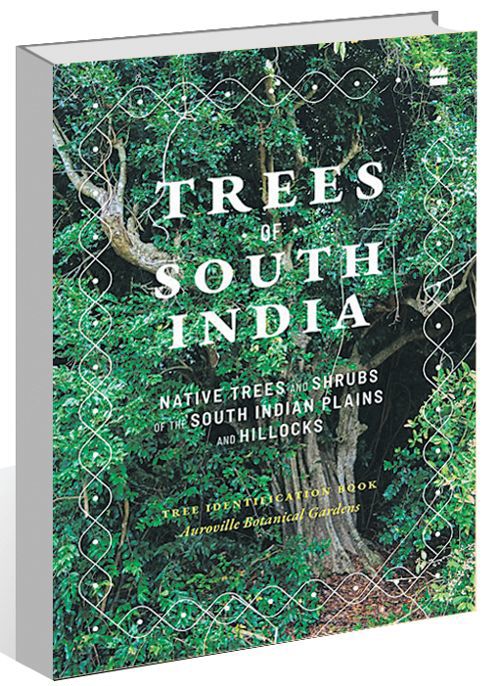Trees Of South India: Native trees, and shrubs of the south Indian plains and hillocks by Paul Blanchflower and Marie Demont. HarperCollins. Pages 248. Rs 799
Book Title: Trees Of South India: Native trees, and shrubs of the south Indian plains and hillocks
Author: Paul Blanchflower and Marie Demont
Mahesh Rangarajan
The Indian landscape has been undergoing epochal changes in the years since Independence, more so over the last few decades when economic transformations are remaking the landscape and waters. Few issues have divided public opinion as much as the clearance or denudation and degradation of the different kinds of natural vegetation, commonly but misleadingly labelled as forests. Whether such clearance or rather replacement by tillage, mine or urban settlement should be allowed at all, to how it is to be checked, is a matter of common debate.
But in a country with over 400 people to a square kilometre and with nearly half of the land under the tractor (till recently, the plough would have been the right word), how much do we know about regrowing the forest? In fact, much of forestry in imperial and post-British times has been about how to fell trees or grow the handful that mattered for raw material. Yet, the 25,000 varieties of flowering plants, many among them woody trees, call out for care.
This book is a gem and, happily, one of a growing set of works on the myriad life forms that share space with 1.4 billion Indians. In his insightful Foreword, Pradeep Krishen, filmmaker-turned-tree walker and landscape restorationist, draws attention to the works on moths and butterflies, frogs and birds, mammals and reptiles.
‘Trees of South India’ stands out for the place it has grown out of and what it represents. Over the last quarter of a century, the Auroville community in Puducherry, in partnership with an enlightened cements company, has helped bring back on a small slice of land an ecosystem on the brink of collapse. Called the Tropical Dry Evergreen Forest and extant in dry zones in plains and low hillocks of South India, it is a biome — as vital as it is endangered.
The authors led and were part of a small team that asked not how to obliterate a living landscape but how to bring back the profusion of grasses, herbs, creepers, bushes and, most of all, trees that once adorned it. Exotic invasives like the Mexican mesquite or Prosopis juliflora, brought in about 140 years ago by the British, had taken over large swathes. Drawing inspiration from temple groves still extant in small patches, they worked and continue to labour to craft a community of plants and trees at this site.
The book is a delight both for the illustrations and the trees, as also for its nuggets of facts. Most fascinating are the medicinal uses of plant parts, not only leaves and fruit, but even bark and roots. Some are well known like the amla, others less so, like amaltas and kala shisham.
Why all this matters is that in the rumpus over forest classification and clearance, it is all too easy to mistake the wood for the trees. Many trees are not good for logs but provide shade or food, add colour, and stabilise the soil and regulate water recharge. Most of all, neglected ecotypes like the dry evergreens in question were seen as badlands. But with the green mantle now restored, they can again be home for a range of small mammals, insects and reptiles.
The work reminds us that these are as much a part of the culture of South India as its music or dance. The Auroville nursery is among a small clutch of such initiatives. Others include the Shola Trust and Rainforest Restoration Centre of Valparai, both in Tamil Nadu, and Gurushila Botanical Sanctuary in Kerala. Each of these is distinctive but all enable propagation in ways that help shape the ecological landscape.
It’s a book in which complex terms are largely kept at bay, common local names (in Tamil) are invariably given and the basics are all in place. Where a shrub or tree is to be found, how to prepare the seed, if any, to eat or use and the best conditions in which it grows... this is a short, enjoyable walk in the nursery where each inhabitant is described with care, not bereft of knowledge.














